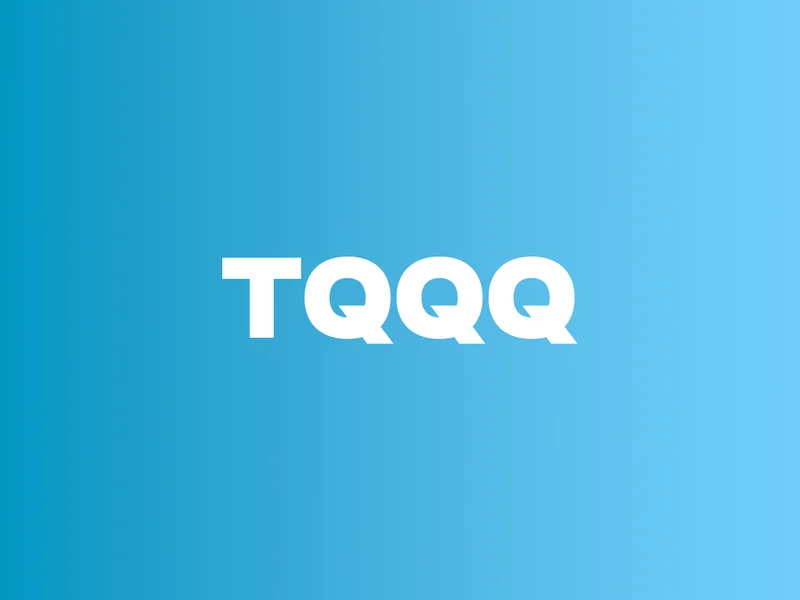TQQQ's 3x Leverage: A Data-Driven Look at Performance vs. Decay
On the surface, the numbers look like a home run. As of early October 2025, the ProShares UltraPro QQQ—better known by its ticker, TQQQ—is up an astonishing 35% for the year. You can almost feel the dopamine hit for investors who took the plunge, watching that green number on their screen grow with an intensity that makes the broader market look sluggish. The underlying index, the Nasdaq-100, is up a very respectable amount, around 17%—to be more precise, 17.4% year-to-date.
But this is where the simple narrative breaks down. A quick calculation shows that three times 17.4% is 52.2%, not 35%. This isn't a rounding error. It's a 17-percentage-point discrepancy, a ghost in the machine that separates TQQQ ETF Amplifies Nasdaq’s Big Gains - 24/7 Wall St. from the mathematical reality. And understanding that gap is the single most important factor in determining whether TQQQ is a high-octane wealth generator or a ticking time bomb.
This isn't just an academic exercise. The difference between a 52% gain and a 35% gain is substantial. So, where did that performance go? What unseen force is siphoning off returns even in a strongly bullish year? The answer lies in the fund's very architecture, a design that is brilliant for a day, but punishing over time.
The Tyranny of the Daily Reset
Let’s be clear about what TQQQ promises. The fund’s objective, stated plainly by its issuer, is to provide three times the daily returns of the Nasdaq-100. That single word, "daily," is the key to this entire puzzle. This ETF is not designed to give you triple the return of the Nasdaq-1-year, or 1-month, or even 1-week. It rebalances its swaps and derivatives every single trading day to hit that 3x target.
Think of it like this: TQQQ is a high-performance drag racer, and the Nasdaq-100 is a highway cruiser. For one single, straight quarter-mile strip of road (a trading day), the drag racer will smoke the cruiser. But if you ask it to complete a cross-country road trip (a full year), the constant stopping, starting, and violent acceleration will burn through fuel and shred the tires. The cruiser, meanwhile, will get there with far less drama and decay.

This is the effect of "volatility decay." When a market is choppy—even if the general trend is upward—the daily rebalancing creates a mathematical drag. Imagine the Nasdaq-100 goes up 10% on Monday. TQQQ soars 30%. The next day, the index falls 10%. TQQQ plummets 30%. The index is now down 1% from its starting point. But TQQQ, after its wild ride, is down a full 9%. That compounding loss, day after day in a volatile market, is the performance that vanishes into thin air. It’s the price you pay for daily leverage, and it’s a price that is always being paid, whether the market is going up, down, or sideways. I've analyzed complex derivatives for years, and the math behind these leveraged products is elegantly brutal. It's designed for a specific purpose—short-term hedging or speculation—and using it for anything else is like using a scalpel to chop wood.
A Bet on a Perfect Trajectory
The fact that TQQQ is up 35% at all is a testament to the character of this year's market rally. It suggests a trend that has been not just strong, but also relatively smooth. A low-volatility, steady climb is the only environment where a leveraged fund can even hope to approximate its promised multiple over a longer period. But that raises a critical question: is that a market condition anyone should be betting on for the long term?
Compounding the structural drag of volatility is the fund's expense ratio (a not-insignificant 0.82% annually). It’s another small, constant leak in the ship's hull. While 0.82% might seem trivial, it's a guaranteed loss that works against you every single day, further widening the gap between the idealized 3x return and the one that actually hits your account.
The holdings are a who's who of tech giants—NVIDIA, Microsoft, Apple. These are powerful companies, but they are also some of the most volatile names on the market. TQQQ essentially takes the inherent volatility of the tech sector and puts it on steroids. This creates a feedback loop where the very nature of its components exacerbates the volatility decay it's designed to suffer from.
So why do investors continue to pile in? Are they simply unaware of the mechanics, mesmerized by the allure of triple-digit returns in a bull run? Or are they making a conscious bet that they can time the market perfectly, riding the smooth updrafts and getting out before the inevitable turbulence arrives? The prospectus is clear that the fund is intended for sophisticated traders over very short holding periods. The reality of its user base may be something else entirely.
The Math Always Wins
Let's be perfectly blunt. The 35% year-to-date return for TQQQ isn't a sign of its strength; it's a statistical anomaly born from a specific and likely temporary market climate. It's a siren song luring investors toward a structure that is mathematically designed to underperform over the long haul. The current success papers over the fund's inherent flaws, but those flaws—volatility decay and fees—are always at work. The question isn't if they will matter, but when the market will shift in a way that makes their impact painfully obvious. Investing in TQQQ for any extended period isn't really investing in the Nasdaq-100. It's a direct bet against volatility itself. And historically, that has been a losing proposition.
Tags: tqqq
APLD's 'Bullish' Q3 Report: What It Actually Means and Why I'm Not Buying It
Next PostWhat Is Aster: And Why You Probably Don't Need to Know
Related Articles
